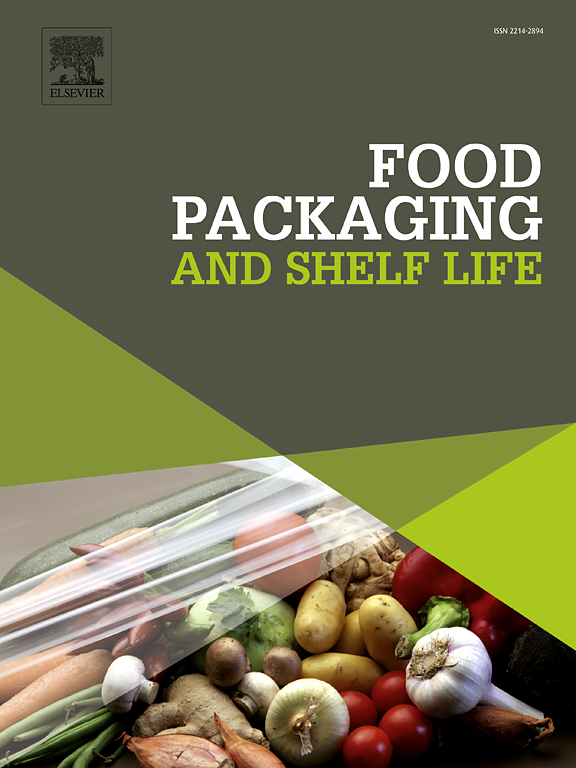Behavior and removal of semi-volatile organic compounds during PET mechanical recycling processes
IF 10.6
1区 农林科学
Q1 FOOD SCIENCE & TECHNOLOGY
引用次数: 0
Abstract
Recycling post-consumer polyethylene terephthalate (PET) for reuse in food contact materials is a current trend in green development. Achieving effective removal of contaminants during the recycling process is crucial for ensuring the quality of recycled PET (rPET). This study utilized gas chromatography coupled with quadrupole time-of-flight mass spectrometry (GC-QTOF-MS) to comprehensively characterize the presence and removal efficiency of semi-volatile organic compounds (SVOCs) in rPET derived from four main recycling stages, including cold-water washing (C-rPET), preliminary decontamination (P-rPET), melt-extrusion step (M-rPET), and the solid state polycondensation step (S-rPET). The results showed that 110, 106, 79, and 70 compounds were tentatively identified in C-rPET, P-rPET, M-rPET, and S-rPET, respectively, and melt-extrusion was the main decontamination stage. To further evaluate the removal efficiency of the recycling process, five surrogates (cyclohexylbenzene, methyl salicylate, methyl stearate, benzophenone, bis(2-ethylhexyl) terephthalate) were selected for the challenge test, and a quantitative method combined accelerated solvent extraction (ASE) with GC-MS/MS was established. The results demonstrate that the recovery process is highly efficient as it effectively removes 97.8 % of bis(2-ethylhexyl) terephthalate and more than 99.5 % of other surrogates. Hierarchical cluster analysis (HCA) was utilized to group compounds according to their intensity distribution during the recovery process to investigate the behavior and fate of detected compounds. Four representative trends were defined along with the corresponding compounds. The above research is helpful for the improvement of recycling processes and provides a complete technical system for the conduct of rPET challenge tests in China.
PET机械回收过程中半挥发性有机化合物的行为和去除
回收消费后的聚对苯二甲酸乙二醇酯(PET)用于食品接触材料的再利用是当前绿色发展的趋势。在回收过程中实现污染物的有效去除是确保再生PET (rPET)质量的关键。本研究利用气相色谱联用四极杆飞行时间质谱(GC-QTOF-MS)综合表征了来自冷水洗涤(C-rPET)、初步净化(P-rPET)、熔融挤压(M-rPET)和固态缩聚(S-rPET)四个主要回收阶段的rPET中半挥发性有机化合物(SVOCs)的存在和去除效率。结果表明,在C-rPET、P-rPET、M-rPET和S-rPET中分别鉴定出110、106、79和70个化合物,其中熔融挤压是主要的去污阶段。为进一步评价回收工艺的去除效果,选择5种替代物(环己苯、水杨酸甲酯、硬脂酸甲酯、二苯甲酮、双(2-乙基己基)对苯二甲酸酯)进行激射试验,建立加速溶剂萃取(ASE)与GC-MS/MS相结合的定量方法。结果表明,该工艺的回收率为97.8% %,对邻苯二甲酸双(2-乙基己基)酯的回收率为99.5% %以上。利用层次聚类分析(HCA)对化合物在回收过程中的强度分布进行分组,研究检测到的化合物的行为和命运。确定了四种具有代表性的趋势以及相应的化合物。上述研究有助于改进回收工艺,为国内开展rPET挑战试验提供了完整的技术体系。
本文章由计算机程序翻译,如有差异,请以英文原文为准。
求助全文
约1分钟内获得全文
求助全文
来源期刊

Food Packaging and Shelf Life
Agricultural and Biological Sciences-Food Science
CiteScore
14.00
自引率
8.80%
发文量
214
审稿时长
70 days
期刊介绍:
Food packaging is crucial for preserving food integrity throughout the distribution chain. It safeguards against contamination by physical, chemical, and biological agents, ensuring the safety and quality of processed foods. The evolution of novel food packaging, including modified atmosphere and active packaging, has extended shelf life, enhancing convenience for consumers. Shelf life, the duration a perishable item remains suitable for sale, use, or consumption, is intricately linked with food packaging, emphasizing its role in maintaining product quality and safety.
 求助内容:
求助内容: 应助结果提醒方式:
应助结果提醒方式:


